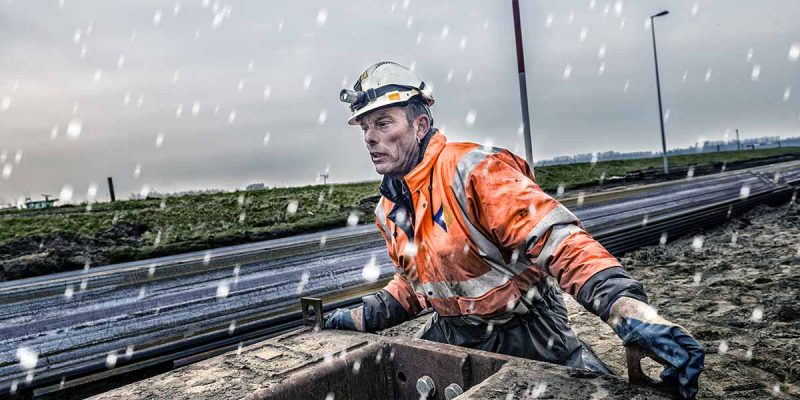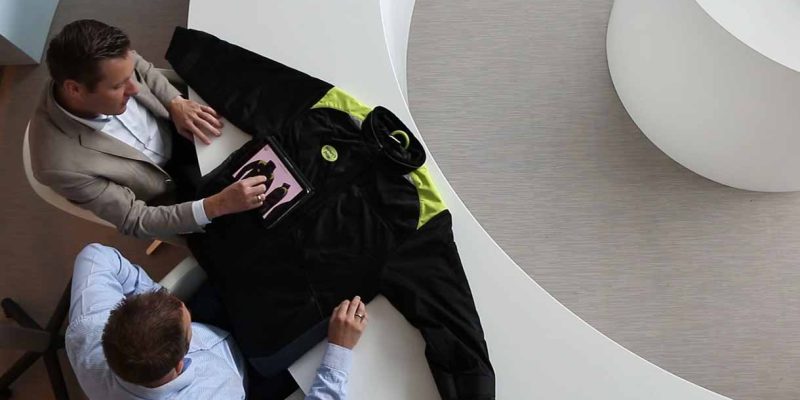Cold during the work activities is uncomfortable, but sometimes inevitable. For instance, road and water works during the winter months or work in the offshore, where moist and wind cause extremely low temperatures. There are also production spaces or cold storages where it is always cold.
A distinction is often made between temperature and wind chill factor; if the wind blows harder, it feels colder. The wind chill factor is thus calculated on the basis of temperature and wind force. This is done, for instance, on the website of the KNMI (Dutch meteorological institute).
In most cases, cold is uncomfortable at most. Still, there may be situations that could also impose risks: also may pose risks:

Dressing in layers with “still air” between them, will create additional insulation. In case of protection against cold, we work in accordance with the proven three-layer system:
In general, an employer must offer an employee additional clothing when the temperature drops below 15 degrees. This is a guideline, so it is not legislated, unless it is part of the CLA. Depending on the work activities, you can choose from the following protective equipment:
In case of extreme cold:
Applying the above, take account of the fact that ‘winter items’ may impose a new threat. A polyester turtleneck may be nice and warm and comfortable, but it would be irresponsible in combination with welding and grinding activities.

Regarding many different work environments, our PPE-consultants have given thought to workwear. Technical developments make clothing usable more broadly and more comfortable, such as multinorm softshell coats. Workwear also provides opportunities for your appearance, such as by use of house-style colours, prints and logos.
Our advisors are happy to help you or make an appointment if you wish.
Phone: +31 184 434 455
Mail: info@veiliggoed.nl
By use of our scan, we inventory risks at function level. By means of an advisory report and a PPE-matrix, you will get an overview of the required protection measures. More information about the PPE-scan.
Trapezium 400
3364 DL Sliedrecht